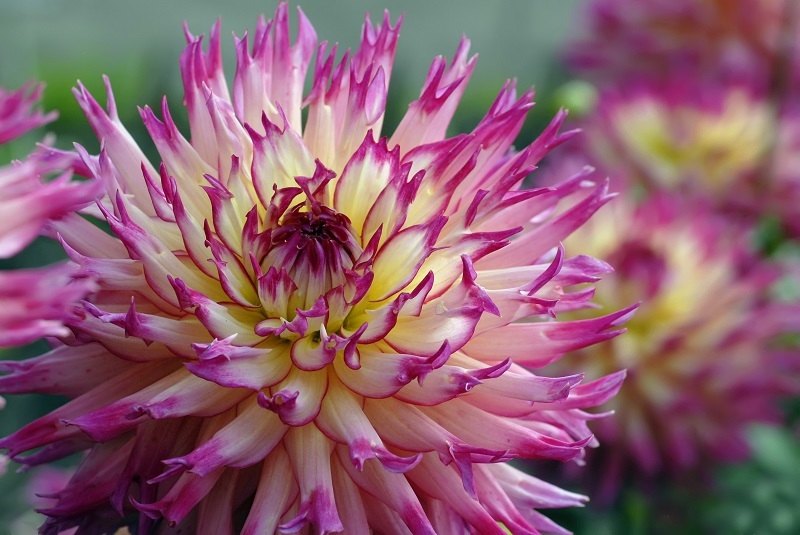Dive Into the Meaning of Your Birth Flower
Posted on 18/08/2025
Dive Into the Meaning of Your Birth Flower
Have you ever wondered what your birth flower says about you? Much like birthstones, each month has a unique bloom associated with it, carrying a rich tapestry of symbolism and history. Diving into the meanings behind birth flowers not only reveals fascinating cultural stories but also offers personal insights and thoughtful gift ideas for yourself and your loved ones. In this comprehensive guide, you'll discover the secrets and symbolism behind each month's birth flower. Let's explore how these blossoms can illuminate your personality and legacy!

What Are Birth Flowers?
Birth flowers are specific flowers associated with each month of the year. The tradition dates back to ancient times, similar to zodiac signs and birthstones. Each flower represents distinct traits, virtues, and sentiments--making them powerful symbols, cherished for centuries across cultures. Your birth flower is not just a pretty plant; it's a reflection of historical meaning, personality, and emotional expression.
Why Discover the Meaning of Your Birth Flower?
- Personal Connection: Understanding your birth flower links you to nature and tradition, forging a unique identity marker.
- Symbolic Gifts: Personalized bouquets or floral jewelry make heartwarming, meaningful gifts.
- Insightful Self-Discovery: The symbolism behind your birth flower can offer fresh perspectives on your strengths and emotional qualities.
- Creative Inspiration: Incorporate your birth bloom into art, decor, or celebrations to manifest its positive energies.
Full List of Birth Flowers by Month and Their Meanings
Below is a month-by-month breakdown of birth flowers, complete with their historical and symbolic meanings:
January -- Carnation & Snowdrop
- Carnation: The carnation, often found in shades of pink, red, and white, symbolizes love, fascination, and distinction. Historically, it is a flower of admiration and a symbol of a mother's undying love.
- Snowdrop: As the first flower to bloom after winter, the snowdrop represents hope and rebirth, reminding us that new beginnings are always on the horizon.
February -- Violet & Primrose
- Violet: This delicate bloom stands for faithfulness, modesty, and spiritual wisdom. The violet's rich purple hue has long been linked with dignity and affection.
- Primrose: The primrose signifies young love and optimism. Its cheery yellow petals announce the coming of spring.
March -- Daffodil
- Daffodil: March's lively daffodil represents new beginnings, prosperity, and joy. Their early spring appearance marks renewal and hope, making them a perfect symbol for those born this month.
April -- Daisy & Sweet Pea
- Daisy: Daisies symbolize purity, innocence, and loyal love. The word "daisy" comes from "day's eye," a nod to how the flower opens with the sun.
- Sweet Pea: This fragrant flower stands for delicate pleasure and good-bye. It's often given as a thank-you or farewell.
May -- Lily of the Valley & Hawthorn
- Lily of the Valley: With its sweet scent and petite, bell-shaped flowers, the lily of the valley is a classic symbol of humility, sweetness, and the return of happiness.
- Hawthorn: The hawthorn blossom represents hope and supreme happiness, heralding the beauty and joy of late spring.
June -- Rose & Honeysuckle
- Rose: Perhaps the most iconic of all blooms, roses represent love, passion, and gratitude. Different colors carry different meanings, from red (romance) to yellow (friendship).
- Honeysuckle: With its sweet fragrance and summery vines, honeysuckle symbolizes bonds of love and devoted affection.
July -- Larkspur & Water Lily
- Larkspur: Known for its tall spikes and vivid colors, larkspur signifies positivity, dignity, and heart-opening connection.
- Water Lily: This serene blossom stands for purity and enlightenment, floating gently on water's surface and inviting reflection.
August -- Gladiolus & Poppy
- Gladiolus: Associated with strength of character, integrity, and remembrance, the sword-shaped gladiolus is a symbol of honor and resilience.
- Poppy: The poppy holds meanings of imagination and eternal sleep. In some cultures, it represents remembrance for those lost in war.
September -- Aster & Morning Glory
- Aster: These star-shaped blossoms symbolize love, wisdom, and faith. The name "aster" comes from the Ancient Greek word for "star."
- Morning Glory: Blooming early and fading by afternoon, morning glories stand for the fleeting nature of love and life.
October -- Marigold & Cosmos
- Marigold: Known for vibrant orange and gold hues, marigolds represent passion, creativity, and resilience. They're also linked with cheerfulness and appreciation.
- Cosmos: The cosmos flower signifies order, harmony, and tranquility--its balanced petals a reflection of the universe itself.
November -- Chrysanthemum
- Chrysanthemum: A symbol of friendship, joy, and longevity. In many Asian cultures, chrysanthemums are revered as icons of happiness and sunlight.
December -- Narcissus & Holly
- Narcissus: The narcissus, often appearing as a winter daffodil, conveys self-esteem, renewal, and hope.
- Holly: With its glossy green leaves and red berries, holly is a symbol of protection and festive cheer.
How to Incorporate Your Birth Flower Into Your Life
Once you know the meaning of your birth flower, why not celebrate it year-round? Here are some creative and meaningful ways to bring your birth flower into your daily life:
- Jewelry: Wear necklaces, rings, or bracelets featuring your birth flower's image or gemstone representation for a subtle, stylish nod to your unique bloom.
- Home Decor: Display fresh or dried birth flowers in vases, or choose wall art and prints highlighting your birth month's bloom.
- Gardening: Plant your birth flower in your garden or in pots to bring its symbolism--and its natural beauty--into your environment.
- Gifting: Share potted or cut versions of your birth flower as personalized birthday, anniversary, or milestone gifts.
- Special Occasions: Incorporate your birth flower's colors and motifs into weddings, baby showers, or milestone parties for a personal touch.
- Daily Rituals: Use imagery or scents of your flower in meditation, affirmations, or journaling to channel its positive qualities.
Birth Flower Symbolism in Culture and Tradition
The meanings behind birth flowers draw from folklore, mythology, art, and literature. Throughout history, flowers have been used to communicate emotions and messages when words could not. For example, the Victorians developed a "language of flowers" (floriography), using blooms to express admiration, gratitude, apology, or affection in secret love notes.
In weddings, birth flowers are often incorporated into bouquets and decorations to imbue the ceremony with personal significance. In some societies, birth flowers are believed to provide protection, blessings, and guidance to those born in their respective months.
Astrology and birth flowers also intersect. Some astrologers connect specific blooms to zodiac signs, infusing astrological readings and natal charts with additional layers of symbolism.
Fascinating Facts About Birth Flowers
- The origins of birth flowers stretch back to Ancient Rome, where flowers were linked to gods and goddesses and used in birthday rituals.
- Some months, like April and December, have two birth flowers due to regional traditions or wide-ranging symbolism.
- Honeysuckle and rose are both June flowers in the U.S., but in the U.K., honeysuckle is more commonly recognized.
- A bouquet containing someone's birth flower makes a perfect personalized birthday or anniversary gift, loaded with heartfelt meaning.

Birth Flower FAQs
What if I don't like my birth flower?
That's okay! Birth flowers are just one way to express yourself. You can always look to the alternative flower for your month, or even select another month's bloom if it better captures your spirit.
Can I have more than one birth flower?
Yes. Several months have multiple birth flowers associated with them, often reflecting different traditions or local flora.
How can I find out my birth flower?
Simply check the month you were born and refer to the comprehensive list above. Still unsure? Florists and online resources can also help.
Are birth flowers the same as zodiac flowers?
Not exactly. While birth month flowers relate to the calendar, zodiac flowers are chosen based on astrological signs. Both can be meaningful and are sometimes intertwined.
Conclusion: Embrace the Magic of Your Birth Flower
Dive into the meaning of your birth flower to unlock a new dimension of personal mythology and tradition. Whether you connect with the hope of the daffodil, the passion of the marigold, or the purity of the lily of the valley, your birth bloom is more than just a plant--it's a symbol of your unique journey and character.
Celebrate your story by bringing your birth flower into your life in creative ways. Share its beauty and meaning with those you love, and let its symbolism inspire you every day. Your birth flower's story is waiting to blossom--will you let it?
Latest Posts
Creating a Blooming Oasis with Hydrangeas
Dive Into the Meaning of Your Birth Flower
Orchid Mastery: The Definitive Care Guide







